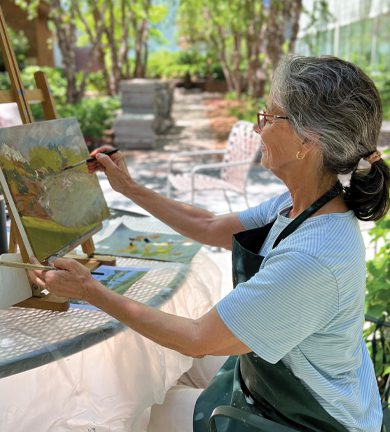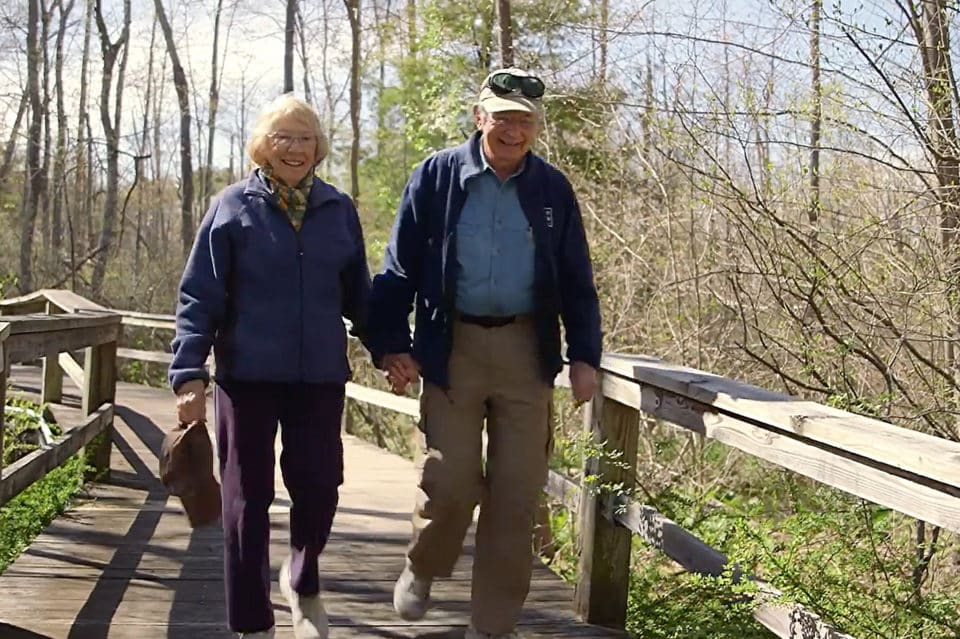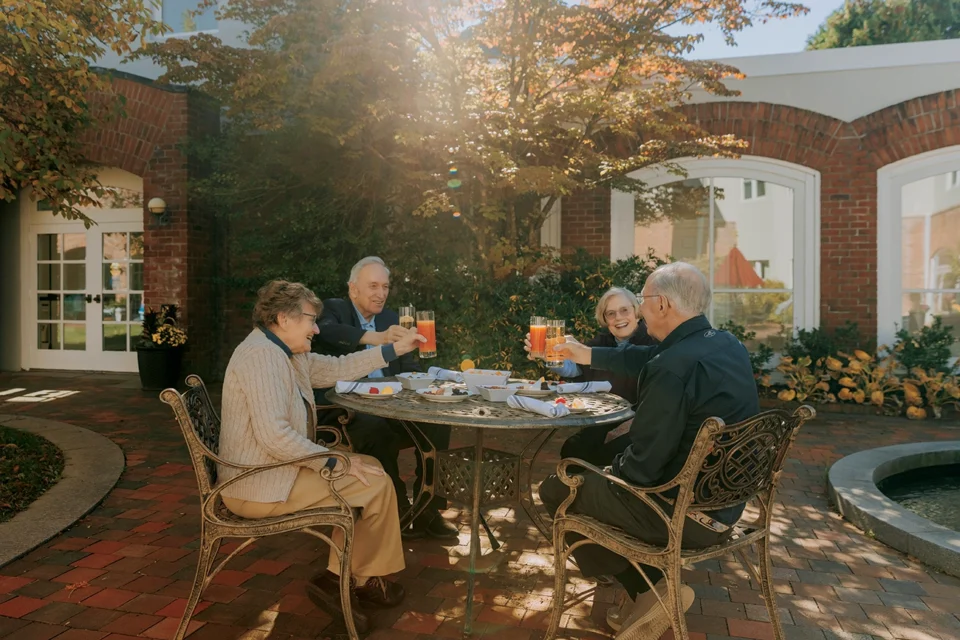July’s heat can slow even the busiest calendar, which is exactly why writer Alan Caruba picked this month to launch National Anti-Boredom Month in the late 1980s. His challenge remains timely — especially for older adults who, after decades of structure, sometimes discover that increased freedom comes with unexpected stretches of empty time.
This month, let’s take a closer look at the effects of boredom and some essential strategies for finding joy and purpose in life.
Why Boredom Is a Health Risk
More than a mere annoyance, boredom has been linked with risky behavior, cognitive decline, and even earlier mortality. It can sap motivation, which reduces activity, shrinks social circles, and deepens isolation — fueling more boredom. Breaking the cycle starts with recognizing boredom as a genuine wellness concern.
Common Triggers of Boredom for Older Adults
Understanding the situations that can foster or exacerbate boredom is important for knowing how to beat it. Common drivers of boredom include:
- Sudden schedule changes: Retirement, widowhood, or moving can erase the daily rhythms that used to give the week shape.
- Shrinking social networks: Friends relocate or relatives get busy, resulting in fewer spontaneous invitations.
- Limited mobility: Health conditions or transportation gaps can close doors to once-favorite activities.
- Isolating environments: Car-centric suburbs with sparse parks and sidewalks make it harder to bump into neighbors or nature.
What to Do When Bored: 5 Ways to Keep Yourself Entertained and Engaged
To banish boredom and increase enjoyment, try these techniques:
- Pursue hobbies that get you in a flow state: Gardening, woodworking, or playing an instrument can keep you pleasantly engaged and focused for hours.
- Join or start small groups: Book clubs, walking crews, and volunteer teams add accountability and laughter to leisure time.
- Move daily, outdoors when possible: A 30-minute walk in a green space lifts your mood and can spark conversation with fellow recreationists.
- Schedule learning goals: Language apps, watercolor classes, and library programs provide milestones and new classmates.
- Share your expertise: Mentoring, tutoring, or leading a workshop transforms decades of experience into fresh purpose.
Pro tip: Treat hobbies like appointments; ink them into the calendar, and hold yourself accountable to them, just like meetings.
Defeat Boredom With Personal Goals
Author Chris Guillebeau argues in “The Happiness of Pursuit” that happiness often springs from chasing a meaningful quest, not simply reaching the finish line. Clear, challenging goals give each morning a reason to matter and each evening a story to tell:
- Define a quest that excites you: It could be visiting every state park in your region, recording a family oral history, or mastering a new musical instrument.
- Break it into bite-size milestones: Weekly or monthly checkpoints keep momentum high and victories frequent.
- Share the journey: Publicly posting progress — whether on a bulletin board or a blog — invites encouragement and accountability.
- Savor the process: Guillebeau notes that the pursuit itself delivers daily doses of novelty and purpose, crowding boredom out of the picture.
When goals align with personal values and stretch your comfort zone just enough, they transform free time from empty space into fertile ground.
Technology Can Help — When It’s a Bridge, Not a Destination
Video chats, online museum tours, and virtual reality travel portals open doors for people everywhere. Yet screens should launch engagement, not replace it. Use a tablet to practice yoga poses with an instructor, then test them in the park. Stream a live cooking class, then invite your neighbors to taste the results. Digital tools shine brightest when they lead to human connection.
Rethink Your Home Base for Anti-Boredom Success
Your environment either fuels or fights isolation. Planners now speak of 15-minute neighborhoods, where groceries, green space, and culture sit within a quarter-hour walk. Even if your street falls short, you can curate a mini version by mapping essentials — such as a library, café, and clinic — within a comfortable radius and visiting them on rotation. Look for spaces that:
- Encourage lingering (benches, shaded patios)
- Host multigenerational events (concerts, craft fairs)
- Offer spontaneous interaction (dog parks, community gardens)
When architecture invites conversation, residents need less willpower to stay engaged.
If you’re currently rethinking your living situation and would love a boost against boredom, explore our independent living community at Duncaster. With friendly residents, natural beauty, and exciting amenities, there’s never a dull moment. Take a virtual tour of our space today, or click here to reap the benefits of becoming a charter member of Duncaster’s campus expansion.
Build Community, Beat Boredom
Humans are wired for connection, and purposeful relationships remain one of the strongest antidotes to boredom in every stage of life. Developing a vibrant community does more than fill a calendar; it creates a web of mutual support that keeps curiosity alive. Connect with your community by:
- Attending recurring events: Weekly farmers’ markets, choir rehearsals, or faith-based studies provide dependable touchpoints that anchor the week.
- Sharing micro-volunteering tasks: Sorting donations for an hour or helping neighbors with smartphone basics offer quick wins that spark gratitude on both sides.
- Creating space for interaction: Invite friends to meet regularly at the same café or park bench — familiar turf lowers social barriers and encourages deeper conversation.
- Celebrating small milestones: Mark a neighbor’s new hobby or personal goal with a potluck or congratulatory note; these gestures weave a tighter social fabric.
A robust community offers companionship on quiet days and cheering sections on adventurous ones, making boredom far less likely to take hold.
Live Vibrantly Every Month at Duncaster
Boredom struggles to take root in a community designed for engagement. At Duncaster’s independent living community, residents choose from exceptional dining experiences, lectures for lifelong learning, curated day trips, and on-site fitness programs — all without worrying about home maintenance or transportation. Neighbors become friends, staff become supporters, and every corner of the campus is built to spark conversation. Schedule a tour and see how Duncaster turns National Anti-Boredom Month into a year-round promise: Life should stay interesting, no matter your age.
Duncaster is Hartford County’s premier nonprofit Life Plan community. Here on our 94-acre campus, you can enjoy an active lifestyle filled with friendship, art, culture, education, and wellness — plus exceptional service from our staff. Adjacent to LaSalette Open Space and its miles of lovely scenic walking trails, our community offers relaxed country living only minutes away from exciting dining and cultural experiences in and around Bloomfield. Learn more about our community or schedule a tour today to see why doctors, educators, entrepreneurs, musicians, and many others call Duncaster home.






